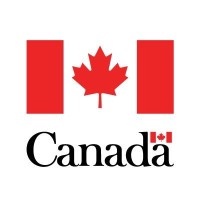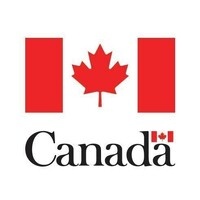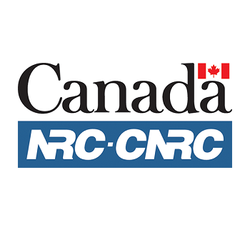
Open
Small Business Deduction (SBD)
Last Update: November 19, 2025
Canada
Small business tax credit
Tax Credits
At a glance
Funding available
Financing goals
No objectives are currently available
Eligible Funding
- No Condition
Timeline
- Open Date : November 14, 2019
Eligible candidates
Eligible Industries
- All industries
Location
- Canada
Legal structures
- For-profit business
Annual revenue
- All revenue ranges
Organisation size
- All organization sizes
Audience
- Canadians
Overview
The Small Business Deduction (SBD) reduces corporate income tax for Canadian-controlled private corporations by providing a tax benefit on up to $500,000 of active business income annually. The program aims to support the growth of small businesses by encouraging active business operations within Canada.
Activities funded
Examples of admissible projects:
$ 25,000
Creating a financial literacy program for young adults in underserved communities
$ 35,000
Launching a mobile app to connect service providers with local customers
$ 30,000
Providing renewable energy solutions to rural areas through solar panel installations
$ 40,000
Launching an e-commerce platform for artisanal products made in Canada
$ 50,000
Developing a comprehensive financial software platform for local businesses
$ 15,000
Establishing a community garden to provide fresh produce and educational programs
Eligibility
- The applicant must be a Canadian-controlled private corporation (CCPC) throughout the taxation year.
- The corporation must have income from an active business carried on in Canada.
- The corporation's business limit applies, which may be reduced based on factors such as taxable capital and adjusted aggregate investment income.
Who is eligible?
- Canadian-controlled private corporations (CCPCs)
Selection criteria
- Ability to reduce corporate tax
- Amount of income for the year from an actively operated business in Canada
- Taxable income for the year
- Business limit for the year
How to apply
- Step 1: Calculate Your SBD and Business Limit
- Determine your status as a Canadian-controlled private corporation (CCPC).
- Calculate your income from active business in Canada, taxable income, and business limit for the year.
- Apply the phase-out rules if your adjusted aggregate investment income or taxable capital employed in Canada is above prescribed thresholds.
- Step 2: Prepare Relevant Documentation
- Gather supporting documents including financial statements, details of active business income, records of adjusted aggregate investment income, and information on associated corporations.
- Maintain documentation on any asset disposals, transfers of property, and any changes to fiscal year end, as required.
- Step 3: Complete Your Corporate Tax Return
- Accurately complete your T2 Corporation Income Tax Return, applying the Small Business Deduction in the relevant schedules.
- Include all required schedules detailing business limits, income calculations, and associated corporations, as applicable.
- Step 4: Submit the Tax Return to the CRA
- File your completed and signed T2 Corporation Income Tax Return, including all supporting schedules, with the Canada Revenue Agency (CRA) by the applicable deadline.
- Step 5: Respond to CRA Notices or Requests
- Monitor for any follow-up communications from the CRA regarding your SBD claim.
- Provide additional information or documentation if requested by the CRA for verification.
Additional information
- Allocation of the business limit must be shared among associated corporations within the same taxation year.
- Anti-avoidance rules are in place to prevent reduction of the passive income business limit through transfers or loans to related corporations that are not otherwise associated.
- Corporations must maintain detailed documentation to substantiate the purpose and timing of relevant transactions, particularly regarding transfers of investments or changes in fiscal year.
- For changes in fiscal year end, corporations must receive approval from the Canada Revenue Agency (CRA) by submitting a formal request with supporting details.
Apply to this program
Frequently Asked Questions about the Small Business Deduction (SBD) Program
Here are answers to the most common questions about the Small Business Deduction (SBD). This section explains what the program is, how much funding is available, eligibility requirements, application deadlines, and other important details to help you determine if this grant is right for your business.
What is the Small Business Deduction (SBD)?
How much funding can be received?
What expenses are eligible under Small Business Deduction (SBD)?
What is the deadline to apply?
Is the Small Business Deduction (SBD) a grant, loan, or tax credit?
Who are the financial supporters of the Small Business Deduction (SBD)?
Who is eligible for the Small Business Deduction (SBD) program?
Who can I contact for more information about the Small Business Deduction (SBD)?
Where is the Small Business Deduction (SBD) available?
Apply to this program
More programs like this

Tax CreditsOpen
Scientific Research and Experimental Development (SR&ED) — Tax Incentive Program
Canada Revenue Agency (CRA)Scientific research and experimental development tax credit

Tax CreditsOpen
Clean Technology Manufacturing (CTM) Investment Tax Credit (ITC)
Canada Revenue Agency (CRA)Incentivize Canadian companies to invest in clean technology

Tax CreditsOpen
Clean Technology (CT) Investment Tax Credit (ITC)
Natural Resources Canada (NRCan)Offer up to 30% refundable credit for capital investments in new clean technologies in Canada

Tax CreditsOpen
Tax incentives for mining and exploration
Canada Revenue Agency (CRA)Federal and provincial tax incentives support mining and exploration activities

Grant and FundingTax CreditsLoans and Capital investmentsOpen
Smart Renewables and Electrification Pathways Program (SREP) - Critical Regional Priorities (CRP) Stream
Natural Resources Canada (NRCan)Funding to reduce GHG emissions with renewables and grid modernization

Tax CreditsOpen
Ecological Gift Program
Environment and Climate Change Canada (ECCC)Offers tax incentives for donating ecologically sensitive land

Tax CreditsOpen
APCHQ — Apprenticeship job creation tax credit
Association des professionnels de la construction et de l’habitation du Québec (APCHQ)Non-refundable tax credit for employers hiring eligible apprentices

Other SupportTax CreditsOpen
Duties Relief Program
Canada Border Services Agency (CBSA)Allows duty-free import of goods that are later exported

Tax CreditsOpen
Livestock Tax Deferral Provision
Agriculture and Agri-Food Canada (AAFC)Tax deferral for livestock producers in some Atlantic regions

Grant and FundingOpen
Industrial Research Assistance Program (IRAP) — Financial Assistance
National Research Council Canada (NRC)Financial support for technology innovations
Sign up to our platform to access the Small Business Deduction (SBD) information sheet for free
Get access to 4,000+ programs, practical guides, personalized alerts, and an AI assistant to support your grant applications.